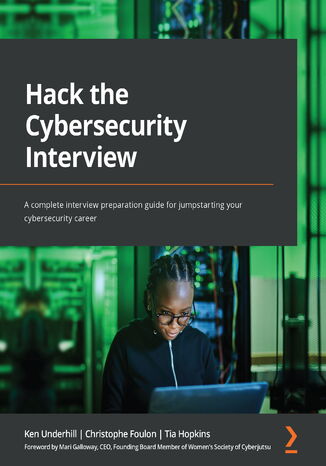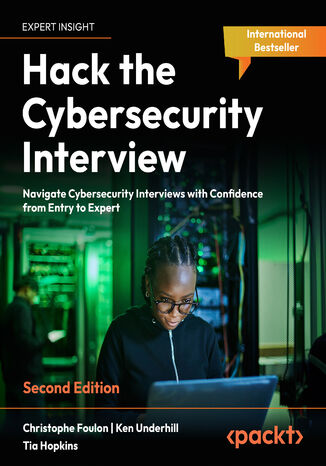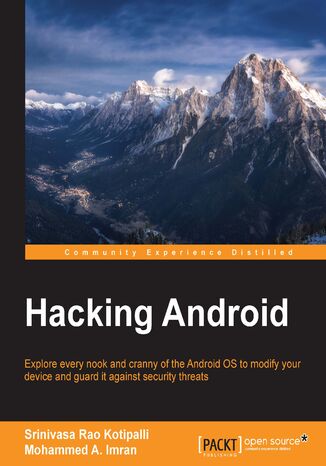Kategorie
-
- Bitcoin
- Bizneswoman
- Coaching
- Controlling
- E-biznes
- Ekonomia
- Finanse
- Giełda i inwestycje
- Kompetencje osobiste
- Komputer w biurze
- Komunikacja i negocjacje
- Mała firma
- Marketing
- Motywacja
- Multimedialne szkolenia
- Nieruchomości
- Perswazja i NLP
- Podatki
- Polityka społeczna
- Poradniki
- Prezentacje
- Przywództwo
- Public Relation
- Raporty, analizy
- Sekret
- Social Media
- Sprzedaż
- Start-up
- Twoja kariera
- Zarządzanie
- Zarządzanie projektami
- Zasoby ludzkie (HR)
-
- Architektura i wnętrza
- BHP
- Biznes i Ekonomia
- Dom i ogród
- E-Biznes
- Ekonomia i finanse
- Ezoteryka
- Finanse
- Finanse osobiste
- Firma
- Fotografia
- Informatyka
- Kadry i płace
- Kobieca
- Komputery, Excel
- Księgowość
- Kultura i literatura
- Naukowe i akademickie
- Ochrona środowiska
- Opiniotwórcze
- Oświata
- Podatki
- Podróże
- Psychologia
- Religia
- Rolnictwo
- Rynek książki i prasy
- Transport i Spedycja
- Zdrowie i uroda
-
- Aplikacje biurowe
- Bazy danych
- Bioinformatyka
- Biznes IT
- CAD/CAM
- Digital Lifestyle
- DTP
- Elektronika
- Fotografia cyfrowa
- Grafika komputerowa
- Gry
- Hacking
- Hardware
- IT w ekonomii
- Pakiety naukowe
- Podręczniki szkolne
- Podstawy komputera
- Programowanie
- Programowanie mobilne
- Serwery internetowe
- Sieci komputerowe
- Start-up
- Systemy operacyjne
- Sztuczna inteligencja
- Technologia dla dzieci
- Webmasterstwo
-
- Antologie
- Ballada
- Biografie i autobiografie
- Dla dorosłych
- Dramat
- Dzienniki, pamiętniki, listy
- Epos, epopeja
- Esej
- Fantastyka i science-fiction
- Felietony
- Fikcja
- Humor, satyra
- Inne
- Klasyczna
- Kryminał
- Literatura faktu
- Literatura piękna
- Mity i legendy
- Nobliści
- Nowele
- Obyczajowa
- Okultyzm i magia
- Opowiadania
- Pamiętniki
- Podróże
- Poemat
- Poezja
- Polityka
- Popularnonaukowa
- Powieść
- Powieść historyczna
- Proza
- Przygodowa
- Publicystyka
- Reportaż
- Romans i literatura obyczajowa
- Sensacja
- Thriller, Horror
- Wywiady i wspomnienia
-
- Archeologia
- Bibliotekoznawstwo
- Filmoznawstwo
- Filologia
- Filologia polska
- Filozofia
- Finanse i bankowość
- Geografia
- Gospodarka
- Handel. Gospodarka światowa
- Historia i archeologia
- Historia sztuki i architektury
- Kulturoznawstwo
- Lingwistyka
- Literaturoznawstwo
- Logistyka
- Matematyka
- Medycyna
- Nauki humanistyczne
- Pedagogika
- Pomoce naukowe
- Popularnonaukowa
- Pozostałe
- Psychologia
- Socjologia
- Teatrologia
- Teologia
- Teorie i nauki ekonomiczne
- Transport i spedycja
- Wychowanie fizyczne
- Zarządzanie i marketing
-
- BHP
- Historia
- Kodeks drogowy. Prawo jazdy
- Nauki prawne
- Ochrona zdrowia
- Ogólne, kompendium wiedzy
- Podręczniki akademickie
- Pozostałe
- Prawo budowlane i lokalowe
- Prawo cywilne
- Prawo finansowe
- Prawo gospodarcze
- Prawo gospodarcze i handlowe
- Prawo karne
- Prawo karne. Przestępstwa karne. Kryminologia
- Prawo międzynarodowe
- Prawo międzynarodowe i zagraniczne
- Prawo ochrony zdrowia
- Prawo oświatowe
- Prawo podatkowe
- Prawo pracy i ubezpieczeń społecznych
- Prawo publiczne, konstytucyjne i administracyjne
- Prawo rodzinne i opiekuńcze
- Prawo rolne
- Prawo socjalne, prawo pracy
- Prawo Unii Europejskiej
- Przemysł
- Rolne i ochrona środowiska
- Słowniki i encyklopedie
- Zamówienia publiczne
- Zarządzanie
-
- Afryka
- Albumy
- Ameryka Południowa
- Ameryka Środkowa i Północna
- Australia, Nowa Zelandia, Oceania
- Austria
- Azja
- Bałkany
- Bliski Wschód
- Bułgaria
- Chiny
- Chorwacja
- Czechy
- Dania
- Egipt
- Estonia
- Europa
- Francja
- Góry
- Grecja
- Hiszpania
- Holandia
- Islandia
- Litwa
- Łotwa
- Mapy, Plany miast, Atlasy
- Miniprzewodniki
- Niemcy
- Norwegia
- Podróże aktywne
- Polska
- Portugalia
- Pozostałe
- Przewodniki po hotelach i restauracjach
- Rosja
- Rumunia
- Słowacja
- Słowenia
- Szwajcaria
- Szwecja
- Świat
- Turcja
- Ukraina
- Węgry
- Wielka Brytania
- Włochy
-
- Filozofie życiowe
- Kompetencje psychospołeczne
- Komunikacja międzyludzka
- Mindfulness
- Ogólne
- Perswazja i NLP
- Psychologia akademicka
- Psychologia duszy i umysłu
- Psychologia pracy
- Relacje i związki
- Rodzicielstwo i psychologia dziecka
- Rozwiązywanie problemów
- Rozwój intelektualny
- Sekret
- Seksualność
- Uwodzenie
- Wygląd i wizerunek
- Życiowe filozofie
-
- Bitcoin
- Bizneswoman
- Coaching
- Controlling
- E-biznes
- Ekonomia
- Finanse
- Giełda i inwestycje
- Kompetencje osobiste
- Komunikacja i negocjacje
- Mała firma
- Marketing
- Motywacja
- Nieruchomości
- Perswazja i NLP
- Podatki
- Polityka społeczna
- Poradniki
- Prezentacje
- Przywództwo
- Public Relation
- Sekret
- Social Media
- Sprzedaż
- Start-up
- Twoja kariera
- Zarządzanie
- Zarządzanie projektami
- Zasoby ludzkie (HR)
-
- Antologie
- Ballada
- Biografie i autobiografie
- Dla dorosłych
- Dramat
- Dzienniki, pamiętniki, listy
- Epos, epopeja
- Esej
- Fantastyka i science-fiction
- Felietony
- Fikcja
- Humor, satyra
- Inne
- Klasyczna
- Kryminał
- Literatura faktu
- Literatura piękna
- Mity i legendy
- Nobliści
- Nowele
- Obyczajowa
- Okultyzm i magia
- Opowiadania
- Pamiętniki
- Podróże
- Poezja
- Polityka
- Popularnonaukowa
- Powieść
- Powieść historyczna
- Proza
- Przygodowa
- Publicystyka
- Reportaż
- Romans i literatura obyczajowa
- Sensacja
- Thriller, Horror
- Wywiady i wspomnienia
-
- Filozofie życiowe
- Komunikacja międzyludzka
- Mindfulness
- Ogólne
- Perswazja i NLP
- Psychologia akademicka
- Psychologia duszy i umysłu
- Psychologia pracy
- Relacje i związki
- Rodzicielstwo i psychologia dziecka
- Rozwiązywanie problemów
- Rozwój intelektualny
- Sekret
- Seksualność
- Uwodzenie
- Wygląd i wizerunek
- Życiowe filozofie
Powojenna Polska, tragiczny wypadek kolejowy i morderstwo trucizną... W wyniku wielkiego zderzenia kolejowego do szpitala trafiają pasażerowie w stanie krytycznym. Jedna z ocalałych dochodzi do siebie, i kiedy wydaje się, że rekonwalescencja dobiega końca, kobieta nagle umiera. Wyniki wskazują jednoznacznie obecność substancji trującej we krwi ofiary. Czy za jej śmierć odpowiedzialna jest jej lekarka prowadząca, swego czasu rywalka o serce tego samego mężczyzny? Czy komuś może zależeć na wrobieniu jej w zabójstwo? Znajdziecie tu nie tylko zagadki kryminalne, ale i wiernie odmalowaną rzeczywistość Polski w czasach PRL. Lubicie kryminały Leopolda Tyrmanda? Jeśli tak, to pozycja dla Was! PRL kryminalnie PRL kryminalnie - seria składająca się z powieści milicyjnych najbardziej poczytnych autorek i autorów czasów PRL. Barbara Gordon - właść. Larysa Zajączkowska-Mitznerowa, polska pisarka kryminałów PRL urodzona w Kijowie. Pisała również pod innymi pseudonimami, jest autorką około 24 książek, w tym powieści takich jak "Adresat nieznany" i "Błąd porucznika Kwaśniaka".
On sądzi, że szczęście jest tylko chwilowym złudzeniem, a miłość okrutnym żartem. Ona będzie chciała to zmienić. Amara po latach spędzonych w szkołach z internatem wraca do rodzinnego domu. Nie jest to jednak miejsce, w którym czuje się akceptowana. Nigdy nie zaznała rodzinnego ciepła czy wsparcia. Wróciła tylko z jednego powodu. Dla niego. Dla Jaksa. Pokochała go od pierwszego wejrzenia i nigdy nie potrafiła o nim zapomnieć. Jaks jest mężczyzną z zupełnie innego świata. Zdystansowany i ironiczny właściciel salonu tatuażu, który robi wszystko, by jego relacje z kobietami były krótkie i niezobowiązujące. Nosi w sobie piętno bolesnej przeszłości i wydaje się, że nic i nikt nie jest w stanie się przebić przez pancerz, który przez lata budował. I wtedy pojawia się Amara. Oboje nie są świadomi tego, że ich drogi splotły się już wcześniej w bardzo dramatycznych okolicznościach
Kryminał milicyjno-policyjny, inspirowany prawdziwymi wydarzeniami! U schyłku PRL przez Śląsk i Zagłębie przetacza się fala tajemniczych, brutalnych zabójstw. Milicja pozostaje bezsilna. W nowej rzeczywistości III Rzeczypospolitej kobiety wciąż giną, a policjanci bezskutecznie szukają seryjnego mordercy. Kiedy ofiarą staje się siostrzenica premiera, zostaje powołana specjalna grupa operacyjna, do której trafia szeregowy Emil Stompor. Rozpoczynający karierę młody policjant musi zmierzyć się z nietypowym i trudnym zadaniem. Wplątuje się bardzo niebezpieczną rozgrywkę, w której stawką jest życie wielu ludzi. Także jego samego. Autor książki, Aleksander Sowa, to policjant, autor powieści kryminalnych, obyczajowych, zbiorów opowiadań i poradników. Jego kryminały uderzają realizmem i autentycznością - nie ma wątpliwości, że autor zna od podszewki tajniki pracy organów ścigania. Napisał bestsellerową serię kryminalną, zwaną astronomiczną (m.in. Gwiazdy Oriona, Era Wodnika, Punkt Barana), która zyskała status kultowej już w pierwszych wydaniach nakładem własnym autora. Aleksander Sowa należy bowiem do weteranów samodzielnego publikowania i jest jednym z najbardziej rozpoznawalnych pisarzy niezależnych w Polsce.
Gwiazdy rdzewieją na dnie Wisły
Barwna powieść o wojnie polsko-bolszewickiej Według wszelkich znaków na niebie i ziemi Polacy nie mogli wygrać tej wojny. Idące ze wschodu hordy przeważały liczbą, paraliżowały okrucieństwem. Polskę i Europę ocaliły wtedy dwie rzeczy: genialny manewr Piłsudskiego i nieprawdopodobna odwaga polskich żołnierzy. Wojnę z bolszewickim najazdem obserwujemy z perspektywy kilku młodych oficerów, którym Piłsudski zleca najbardziej tajne i najbardziej niebezpieczne zadania. Wszyscy je wykonają, choć niektórzy za cenę życia. Oczyma bohaterów oglądamy krwawe pola bitew: obronę Warszawy pod Ossowem, zagrodzenie przeprawy przez Wisłę w Płocku i ofensywę znad Wieprza. Zwycięstwo pod Maciejowicami w roku 1920 zmywa pamięć klęski z roku 1794 i odwraca bieg historii. Na tle wojny rozgrywają się piękne i trudne historie miłosne, obserwujemy fascynującą walkę z sowieckim wywiadem, udaremnienie zamachu na Piłsudskiego, możemy przysłuchiwać się dyskusjom polityków próbujących wyznaczyć przyszłość świata.
Gwiaździsta noc. Prywatne śledztwo Agaty Brok t. 2
Agata Brok znów staje w obliczu zagadki, tym razem dotyczącej rodziny jej chłopaka, Kermita. Lidka, która miała właśnie zacząć pracę w tej samej firmie co Agata, ginie pod kołami samochodu. Szybko okazuje się, że nie był to zwykły wypadek...
Brawurowa powieść graficzna autora Gry o tron z ilustracjami nominowanej do nagrody Hugo Rai Golden osadzona w fascynującej scenerii Chicago przyszłości - pełnego intryg, przygód i spiskujących obcych Dziesięć lat temu przedstawiciele międzygwiezdnej społeczności składającej się z trzystu czternastu gatunków wylądowali na Ziemi i poprosili, byśmy stali się trzysta piętnastym członkiem ich wspólnoty. Po ciągnących się bez końca opóźnieniach Gwiezdny Port w Chicago wreszcie otwarto. Przybywają do niego obcy dyplomaci, kupcy oraz turyści. Na jego terenie podlegają oni prawom określonym przez międzygalaktyczny traktat, ale poza nim porządku pilnuje chicagowska policja. Charlie Baker, niedawno przeniesiony do komisariatu w dzielnicy, w której znajduje się Gwiezdny Port, gorąco pragnął wykorzystać w praktyce swój entuzjazm do wszystkiego, co pozaziemskie. Nie spodziewał się jednak, że pierwszego dnia radiowóz przywiezie go do miejsca pracy zakutego w kajdanki. Porucznik Bobbi Kelleher jest całkowicie oddana swej pracy, co często prowadzi do konfliktów z Lyhannem NharLysem, szefem ochrony Gwiezdnego Portu i jednym z najgwałtowniejszych wojowników w całej Galaktyce. Infiltrujący grupę nienawidzących kosmitów ekstremistów detektyw Aaron Stein nie ma nic przeciwko łączeniu pracy z przyjemnością do chwili, gdy dowie się o planach zamachu na kontrowersyjnego emisariusza handlowego przy użyciu skradzionych z Gwiezdnego Portu blasterów. Wszyscy oni muszą powstrzymać szaleńców, zanim wysadzą w powietrze cały Wszechświat Prawo i porządek w scenerii Facetów w czerni!
Gwieździste niebo nad nami. Tom 1: Perseidy
Perseidy to historia o zmianach, buncie i uczuciach, na które nikt nie jest gotowy. 17-letnia Nelka nie chciała wyjeżdżać z Łodzi, ale rozwód rodziców sprawił, że utknęła w małym miasteczku w Bieszczadach, gdzie wszyscy znają się od dziecka, a ona jest tylko tą nową. W szkole czuje się jak intruz, w domu jej relacje z matką są coraz bardziej napięte. Jedyną osobą, przy której może być sobą, okazuje się Adam - klasowy prymus, którego poznaje w noc spadających gwiazd. Ale Adam ma brata bliźniaka, Matiego - charyzmatycznego wokalistę rockowego zespołu. Nelka coraz bardziej gubi się w swoich uczuciach, a napięcie między tą trójką narasta. Kiedy nadchodzi bal halloweenowy, dziewczyna czuje, że to może być przełomowy moment - tylko czy na pewno jest na niego gotowa?
Monika Wawrzyńska Gwóźdź do trumny Przerażająco śmieszne! Nie można pogrzebać szansy na miłość Czasem wieko trumny musi się zatrzasnąć, by życie mogło zacząć się na nowo. Jagna Górecka myśli, że jej mąż chce się rozwieść z klasą, Kinga Jasno że właściciele zwierząt domowych mają trochę oleju w głowie (ale gdyby mieli go więcej, ona jako weterynarz miałaby mniej pracy), Karolina zaś że narzeczony wyjechał na trzy dni służbowo. Tymczasem policjanci główkują, co trumna z ciałem robi w limuzynie ślubnej, a Alicja doskonale wie, komu powierzyć opiekę nad swoimi kotami i domem. Błyskotliwa powieść, która rozśmiesza do łez. Monika Wawrzyńska W odległej młodości studentka warszawskiego AWF-u, kierowca i pilot rajdowy. Później szczęśliwa mama Marysi i ubrana w uwierający biały kołnierzyk pracownica korporacji, pnąca się po szczeblach kariery na sam szczyt. Po głębokim rozczarowaniu życiem korporacyjnym wyjeżdża do Afryki, tam też zdobywa szczyty, tym razem Korony Ziemi (aż dwa pierwszy i ostatni), a także nową perspektywę życiową (taką z wysokości 5895 m n.p.m.). Porzuca korporację, wskakuje w dresy i pisze książki. Przy okazji zostaje własną szefową i kobietą spełnioną. Jako wielbicielka win o bogatym bukiecie mówi o sobie: dobry rocznik. Słucha rocka, wozi się harleyem i wszystkie pieniądze wydaje na podróże. Fragment Kochanie, co byś chciał dostać na urodziny? nieopatrznie zapytała mama Kocia. Trumnę odpowiedział Kocio bez chwili wahania. Trumny ci nie kupię, kotek, bo mi cię opieka społeczna zabierze i będziesz mieszkał w rodzinie zastępczej westchnęła jego mama. Może u nich będę mógł spać w trumnie? zainteresował się chłopiec. Na pewno nie. Nigdzie nie można spać w trumnie. Można na cmentarzu. I w kaplicy. I w zakładzie pogrzebowym... zaczął wyliczać Kocio. Ale wtedy nie śpi się w trumnie, tylko jest się martwym. Westchnął głęboko i ze szczerym smutkiem. Dlaczego nie można sobie kupić trumny i trzymać w domu? Komu to przeszkadza? Kocio widział w internecie łóżka dla chłopców w kształcie samochodów, motorówek i samolotów. Dlaczego nie mógł sobie sprawić drewnianej, wyściełanej atłasem skrzyni?
Habitus żołnierski w literaturze i kulturze polskiej w kontekście Wielkiej Wojny
Podstawą prezentowanych w niniejszej monografii interpretacji jest przekonanie, że męskość nie jest oczywistym, zdeterminowanym biologicznie faktem, lecz historią, na którą składają się działania i interakcje, w której uczestniczą ciała i dyskursy, którą konstytuują medialne obrazy i teksty. Krytyczna analiza kulturowych procesów doing masculinity oraz obszernego korpusu tekstów kultury jako form reprezentacji, dekonstrukcji, transformacji, aktualizacji męskości militarnej w szerokim kontekście Wielkiej Wojny ujawnia trwałe piętno wyciśnięte na polskiej kulturze przez dyskurs militarno-kombatancki, ale także płynność i niestabilność konstrukcji żołnierskości, jej fantazmatyczne fundamenty, limity cielesności w obliczu mechanicznej destrukcji. Dla mężczyzn uwikłanych w żołnierskość jako kombinację czynników kultury, historii, ideologii i geografii, wojna oznacza nie tylko romantyczną przygodę heroiczną, lecz także katastrofalne doświadczenie posiadające nieodwracalne konsekwencje biograficzne.
(Habt ach!) Habt acht! -- Marschiren, Zug marsch! -- -- -- Idą -- -- stęp miarowy -- -- -- -- -- -- -- -- -- -- -- -- -- -- Odeszli, schodząc w dół przez drogi zbocze a On nad nimi rósł, za nimi w podobłocze, coraz górniejszy, rozległy, przestrony, rósł w grzywy dachów, rósł w baszt dziwne głowy i wołał w Miasto, aż het za łan polny z iglic i szczytów wież we wszystkie strony: Otom jest wolny, wolny, wolny, wolny! O niechaj ci, co czcić chcą dumę twoję, dziś uszanują święte twe pustkowie; niechaj witając cię w witalnej mowie imion niemiłych nie wnoszą w podwoje. Dymitr z Goraja kapryśnej dziewczynie onego czasu topór wydarł z dłoni i pchnął do komnat -- zawstydzoną w czynie tę -- co jak Święta zmarła w tej ustroni. [...]Stanisław WyspiańskiUr. 15 stycznia 1869 w Krakowie Zm. 28 listopada 1907 w Krakowie Najważniejsze dzieła: Wesele (1901); Legenda (1897), Warszawianka (1898), Lelewel (1899), Klątwa (1899), Wyzwolenie(1903), Noc Listopadowa (1903), Akropolis (1903), Powrót Odysa (1907), Sędziowie (1907) Polski dramaturg, poeta okresu Młodej Polski, malarz, grafik. Studiował w krakowskiej Szkole Sztuk Pięknych oraz historię sztuki, literaturę i historię na UJ. W latach 1890-1894 podróżował po Europie (Włochy, Szwajcaria, Francja, Niemcy, Praga czeska). Ożeniony z chłopką. Charakterystyczne są jego pastele ? impresjonistyczne pejzaże oraz portrety w duchu estetyki secesji, na których postacie obrysowane wyrazistym konturem uchwycone są w naturalnych pozach. Jest twórcą polichromii i witraży w kościele Franciszkanów w Krakowie. W nawiązujących do tradycji dramatu antycznego i szekspirowskiego dramatach symbolicznych Wyspiańskiego refleksji nad historią oraz problematyką narodową i społeczną dotyczącą Polski towarzyszy ideowa dyskusja z romantyzmem. autor: Katarzyna Jastrząb Kupując książkę wspierasz fundację Nowoczesna Polska, która propaguje ideę wolnej kultury. Wolne Lektury to biblioteka internetowa, rozwijana pod patronatem Ministerstwa Edukacji Narodowej. W jej zbiorach znajduje się kilka tysięcy utworów, w tym wiele lektur szkolnych zalecanych do użytku przez MEN, które trafiły już do domeny publicznej. Wszystkie dzieła są odpowiednio opracowane - opatrzone przypisami oraz motywami.
Ken Underhill, Mari Galloway, Christophe Foulon, Tia Hopkins
This book is a comprehensive guide that helps both entry-level and experienced cybersecurity professionals prepare for interviews in a wide variety of career areas.Complete with the authors’ answers to different cybersecurity interview questions, this easy-to-follow and actionable book will help you get ready and be confident. You’ll learn how to prepare and form a winning strategy for job interviews. In addition to this, you’ll also understand the most common technical and behavioral interview questions, learning from real cybersecurity professionals and executives with years of industry experience.By the end of this book, you’ll be able to apply the knowledge you've gained to confidently pass your next job interview and achieve success on your cybersecurity career path.
Christophe Foulon, Ken Underhill, Tia Hopkins
The cybersecurity field is evolving fast, and so are its job interviews. Hack the Cybersecurity Interview, Second Edition is your go-to guide for landing your dream cybersecurity job—whether you're breaking in or aiming for a senior role.This expanded edition builds on reader feedback, refines career paths, and updates strategies for success. With a real-world approach, it preps you for key technical and behavioral questions, covering roles like Cybersecurity Engineer, SOC Analyst, and CISO. You'll learn best practices for answering with confidence and standing out in a competitive market.The book helps you showcase problem-solving skills, highlight transferable experience, and navigate personal branding, job offers, and interview stress. Using the HACK method, it provides a structured approach to adapt to different roles and employer expectations.Whether you're switching careers, advancing in cybersecurity, or preparing for your first role, this book equips you with the insights, strategies, and confidence to secure your ideal cybersecurity job.
Hacking and Security. The Comprehensive Guide to Penetration Testing and Cybersecurity
Rheinwerk Publishing, Inc, Michael Kofler, Klaus Gebeshuber, ...
This book provides a comprehensive guide to cybersecurity, covering hacking techniques, tools, and defenses. It begins by introducing key concepts, distinguishing penetration testing from hacking, and explaining hacking tools and procedures. Early chapters focus on security fundamentals, such as attack vectors, intrusion detection, and forensic methods to secure IT systems.As the book progresses, readers explore topics like exploits, authentication, and the challenges of IPv6 security. It also examines the legal aspects of hacking, detailing laws on unauthorized access and negligent IT security. Readers are guided through installing and using Kali Linux for penetration testing, with practical examples of network scanning and exploiting vulnerabilities.Later sections cover a range of essential hacking tools, including Metasploit, OpenVAS, and Wireshark, with step-by-step instructions. The book also explores offline hacking methods, such as bypassing protections and resetting passwords, along with IT forensics techniques for analyzing digital traces and live data. Practical application is emphasized throughout, equipping readers with the skills needed to address real-world cybersecurity threats.
Hacking Android. Click here to enter text
Mohammed A. Imran, Srinivasa Rao Kotipalli
With the mass explosion of Android mobile phones in the world, mobile devices have become an integral part of our everyday lives. Security of Android devices is a broad subject that should be part of our everyday lives to defend against ever-growing smartphone attacks. Everyone, starting with end users all the way up to developers and security professionals should care about android security. Hacking Android is a step-by-step guide that will get you started with Android security. You’ll begin your journey at the absolute basics, and then will slowly gear up to the concepts of Android rooting, application security assessments, malware, infecting APK files, and fuzzing. On this journey you’ll get to grips with various tools and techniques that can be used in your everyday pentests. You’ll gain the skills necessary to perform Android application vulnerability assessment and penetration testing and will create an Android pentesting lab.
W jego świecie nie ma miejsca na słabość. A uczucia są słabością Do podziemi nie schodzi się bezkarnie W mitologii greckiej Hades władał królestwem cieni, podziemną krainą umarłych. Ten budzący uzasadniony strach bóg był surowy, ale zawsze sprawiedliwy. Nowoorleański Hades też rządzi światem niedostępnym dla zwykłych śmiertelników ― jest bossem przestępczej organizacji, która trzęsie miastem. W Nowym Orleanie nic nie dzieje się bez jego wiedzy i zgody. Hades dla swoich ludzi jest bezwzględnym szefem, a dla przeciwników okrutnym człowiekiem. Tego nauczyło go życie na ulicy ― w każdej chwili musiał być gotów zabić, jeżeli sam nie chciał zginąć. Do tego pozbawionego litości świata niespodziewanie trafia Ewa. Ta krucha, drobna dziewczyna poszukuje zaginionego brata. Wydaje się, że jest skazana na zgubę wśród gangsterów, alfonsów i złodziei. A jednak przyciąga uwagę samego Hadesa, który czuje przy niej coś, czego nie doświadczał od bardzo dawna. Współczucie? Litość? Sympatię? A może tęsknotę za czymś, czego nie umie nazwać? Mężczyzna nie potrafi się odnaleźć we własnych uczuciach, ale jednego jest pewien ― chce się zaopiekować Ewą. Nawet jeżeli miałoby go to osłabić... Tyle że w królestwie Hadesa słabość bywa zabójcza. Posłuchaj audiobooka:
Hades (#1). Hades. Król Podziemia. God's fate
Retelling mitu o Hadesie i Persefonie osadzony we współczesnym świecie. Bez magii. Bez fantastyki. Jedynymi potworami są ludzie. Osiemnastoletnia Kora opuszcza rodzinną farmę i wyjeżdża na studia do wielkiego miasta Olimpionu. Dotychczas trzymana przez matkę pod kloszem wreszcie chce zacząć żyć na własnych zasadach. Niestety, o jej przybyciu dowiaduje się Hera, żona rządzącego miastem bogacza Zeusa. Od lat żywi ona głęboką nienawiść do matki Kory, a to wydarzenie sprawia, że odżywają w niej dawne urazy. Owładnięta żądzą zemsty postanawia użyć podstępu, aby zaszkodzić córce swojej dawnej rywalki. Zaprasza więc Korę na organizowany przez siebie coroczny bal. Dziewczyna myśli, że to spełnienie jej marzeń, nie mając pojęcia, że pani domu wplącze ją w polityczną i personalną intrygę. Z opresji uratuje ją Hades, brat Zeusa i jego człowiek od brudnej roboty. To właśnie on, władca tajemniczego Podziemia, powszechnie uważany za mordercę i gangstera, w dodatku nieuleczalnie chory, przypadnie Korze do gustu zdecydowanie bardziej niż najpiękniejsi mieszkańcy Olimpionu. Jednak na drodze do ich szczęścia staną zarówno żądna zemsty Hera, jak i matka dziewczyny, która bez walki nie odda swojej córki Hadesowi. Powieść spodoba się miłośniczkom romantasy, wątków age gap i zakazanej relacji, a także serii komiksów Lore Olympus. Monika Magoska-Suchar - urodzona w Krakowie, ukończyła prawo na Wydziale Prawa i Administracji Uniwersytetu Warszawskiego. Prywatnie mama trójki pociech. Hoduje storczyki, wakacje najchętniej spędza w ukochanej Grecji, jest zakupoholiczką. Lubi mroczne lub otwarte zakończenia, które pozostawią zaintrygowanego czytelnika w niedosycie (finałową scenę z Przeminęło z wiatrem uważa za mistrzostwo). Jest autorką dwudziestu bestsellerowych książek z gatunku literatury kobiecej.
















